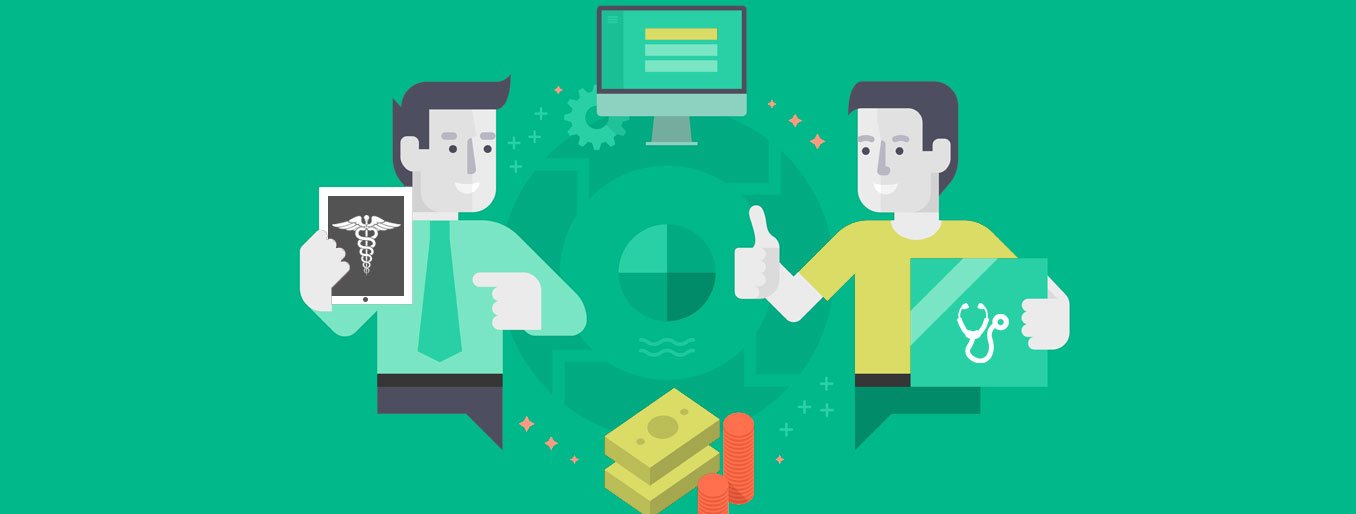A growing number of healthcare practices worldwide are going online with appointment booking systems. Hospitals, clinics, therapeutic groups, name it and they have it. There is a greater need, now more than ever, to understand why such systems not just actually work, but potentially benefit the practice and its patients.

Bookings, re-bookings, cancellations, reminders, follow-ups and various other functionalities can now be easily handled online with efficiency and without all the fuss that is associated with manual appointment scheduling systems. Doctors and other healthcare providers can choose what works best for them from the different options available online, based on their practice and type of procedures offered.
Traditional appointment scheduling methods
Cumbersome, time-consuming, constant manual management, fallible, inefficient and more often than not, frustrating. Practices that have laboured through traditional appointment scheduling methods will recognize these problems easily. Although documentation on paper gave way to digitized appointment bookings, constant management by staff members is still necessary with the traditional method, to keep track of new bookings, re-bookings, cancellations, etc. Not to mention the steady stream of phone calls to be fielded and made. Paper scheduling can mean a great deal of phone calls to ensure multiple patients are not being booked for the same slot. This is not only taxing for the business in terms of the permanent hands always required for manual appointment management but it also greatly compromises the operational efficiency of the organization. More staff resources need to be engaged for other pressing tasks in the facility. Errors are prone to happen and information can get skipped. When the system does not get updated with the changing information — cancellations, shifting appointments across a single day, opting different procedures in the same facility — mix-ups are bound to occur. This undermines the efficiency and reliability of the practice. It can hold back the organization from running at its fullest potential. An unorganised appointment desk can mean unhappy patients.
Why Online Appointment Scheduling Systems?
Online appointment scheduling systems are not only time-saving agents but income-generating assistants too, that provide operational convenience and promote relations built with your patients.
More than 4.3 billion people in the world are expected to use a mobile phone this year. Statistical data from 2015 show strong growth rates in terms of mobile Internet usage and the trend continues to 2016 as well. That would suggest why it is a no-brainer for people to seek healthcare assistance online with a tap just as they would for other services.
The benefits tied to these online services are many and often interconnected.
Convenience, Ease, Accessibility:
The public now resorts to online management for most services. Anything online spells convenience, ease of use and quick access. They not only want it, they expect it. It won’t be long until patients look for a competing facility that offers online appointment scheduling, to circumvent the inconvenience and sometimes, frustration of phone-in bookings. Accessibility to healthcare services online helps patients stay better connected and makes them feel more in control of their time. A 2015 survey suggests that 17% of patients book their doctor appointments online and that by 2019, it is projected, 64% will book their appointments online.
Same is true for the doctors. In a recent study of physician’s use of mobile technology, around 85% of doctors claimed to use smartphones and medical apps, and more than 40% of doctors reported mobile devices decrease time spent on administration. And so, it is only a natural progression towards going online to assist in the most basic of healthcare interactions — scheduling appointments.
Keeping slots full/Reducing no-shows:
Nonattendance or no-shows can result in loss of revenue, affected workflow and increased expenses. Not to mention, the inconvenience and annoyance. Online appointment scheduling systems greatly reduce no-shows or nonattendance, and thus, save revenue.
When a patient misses a scheduled appointment, both the clinic and, the doctor, do not receive payment for that time slot. On an average, a medical facility is said to experience a no-show rate of about 14%. This can amount to a significant loss in revenue and can cost the practice. For a medical practice with a yearly no-show rate of about 5-8%, depending on the size of the practice, the revenue loss experienced by the clinic could range from 3 to 14%.
Eliminating no-shows can also mean eliminating overbooking, which can mean patients disgruntled due to extended wait times.
Research suggests that, in the past, one of the most common reasons for no-shows is forgetting appointments. Automated reminders sent through these online systems can help with this.
If not for online appointment management, staff members will need to contact patients individually to remind/re-confirm appointments. Reminders can be sent automatically through appointment scheduling systems. A significant amount of phone calls from scheduled patients, who might want to know when their next appointment is, can also be reduced or even avoided. This way the doctor’s schedule is always full and regulated.
Available round the clock:
With the traditional booking method, a patient will be required to call in during office hours to book an appointment. But with online scheduling systems, patients can view the healthcare provider’s availability and book appointments, no matter whether the office is busy or closed after hours. This makes it convenient, as they can book their health care visits at leisure, choosing freely, without the pressure of a timeframe or a quick booking online alongside their work, according to their schedule and convenience. It is seen that more than 55% of all appointments booked through online appointment scheduling systems is after business hours.
Information Management:
Patient management is easier and efficient with online systems. Some online appointment scheduling systems also have patient health records management as part of the package. The clinic can create a single point from which patient information can be saved, updated, managed and analysed. Recording, reporting, and analysis of such information help manage a patient’s case file efficiently. All information about the patient recorded regularly, along with a history of checkups and related medical tests, can be used when making educated, carefully considered decisions regarding the patient’s healthcare. This can reduce documentation bulk and reduce the time in accessing physical files. Redundant data entries about the same patient can also be avoided. In addition to this, the patient’s ongoing records can be updated at each appointment, making information on the patient available in one place for easy and quick access. This is important when a patient is consulting two different practitioners at the same facility.
For example, for a patient consulting a dentist and an orthodontist at the same facility, having information stored at a single point can be more convenient, as the dentist would want to be informed about the patient’s ongoing orthodontic treatment to judge how to best handle the patient’s specific oral hygiene needs. A quick reference to the current orthodontic procedures the patient is undergoing in the same facility under another doctor is all it takes for the dentist to plan his procedure. It saves time and ensures that the overall services provided are complementary and co-ordinated. Such systems become a common interface for different medical personnel to access information about a single patient. This can go a long way in consolidating a patient’s care process.
Other advanced functionalities, for example, queuing up scans or x-rays or lab tests within the same facility or an external facility can be made easy and fast. These scan or test results, if available from a single point, can rule out repetitive scan and tests, thus finding favour with the patient as well. Sometimes, multiple disciplines need to be engaged for a single patient. A central database of patient health records will enable various medical personnel to interact at a common platform for decision support and to make a concerted effort at the patient’s wellness. This can mean avoiding grave delays, and more positively, ensuring the patient’s health and safety.
E-marketing:
Patient’s information used for appointment scheduling can include email addresses and phone numbers. Promotional drives such as healthcare packages, blood test packages, free checkups on a chosen health topic (breast cancer awareness drives, mobile vision tests, blood test packages for senior citizens, etc.) can be circulated among patients using the contact information provided. This can bring in more visits by existing patients or bring in new patients through references. New services that patients may be interested in can be easily advertised. Statistical studies in mobile marketing suggest that 70% of mobile searches lead to action on websites in 1 hour. Promotional messages sent on the patient’s mobile can, thus, turn into an appointment.
Information provided when scheduling appointments online can be relied upon as it will be current. Returning patients are also likely to provide current email addresses and phone numbers while scheduling their appointments. So, contact information will be up to date in the online database rather than information provided on paper during their initial registration. This will ensure that promotional emails or messages definitely reach the patient.
Online payment:
As all services will have an associated payment related to them, patients booking an online appointment and paying booking charges, are less likely to miss or totally avoid their appointments. This, again, reduces no-shows and keeps the doctor’s schedules full. As online scheduling systems are safe and the information is kept secure, people are comfortable with payments made online, especially in recent times when a myriad of services are sought online with convenience. Discounts on consultation fees or offering a free consultation within a stipulated period after the first consultation can encourage patients to use the clinic’s online appointment scheduling services.
Save resources:
You can reduce documentation and consequently, the filing required, using online appointment scheduling. Even offline digital calendars and schedulers, often uncoordinated, can leave you with information that has not been interlinked and that cannot be automatically updated. Unmanaged information keeps building, and can turn obsolete.
An automated and self-managing online system can reduce clinic personnel required to man the appointment desk. You can redirect existing staff for other key functions.
Save paper! This is all the more relevant in today’s world, reducing the impact on the environment. Also, paper would mean folders, cabinets, shelves, that require cleaning and maintenance. Lesser files, lesser diaries and registers, lesser calendars, lesser patient records to track and log. In addition to making daily management more efficient, usage of paper can be reduced to a large extent with online systems. Paper usage is said to have dipped in the recent years with the greater availability of large screen hand-held devices that can be used to access and display information.
This directly goes to show how space can be saved too. With a large section of paperwork out of the way, a lot of office space can be more effectively and neatly utilised. Lesser documentation can mean a nearly paperless office.
Efficient use of medical machinery and facilities is another point to consider. Similar appointments can be clustered based on the use of facilities required. A list of patients ensured via confirmed appointments through online appointment systems helps to draw a definite plan when using specific machines or rooms at a care centre. Appointment charts can be set up in such a way that certain rooms or equipment that need to be used concurrently or back-to-back can be made available to medical personnel accordingly. This ensures that unnecessary back and forth movement between facilities or a lack of availability of existing facilities can be avoided. Medical resources can thus be used optimally.
Prime medical resources are, of course, the services of the doctors, nurses and technicians. Once, the appointments are confirmed and are grouped together, the services offered by medical personnel can be coordinated. This can prevent schedules clashing with each other. This can also shorten the waiting time for patients. Consultations that also involve the use of diagnostic machinery, laboratory tests or therapeutic facilities can be planned out too. Visits to the clinic can be shortened, for example, lab tests to be done before consulting the doctor can be carried out in advance. Doctors, technicians and support staff can, thus, work in tandem to offer the best patient experience.
A Step Forward
Health providers are turning to technology to update themselves and to improve the quality of their services. Online appointment scheduling systems are definitely a step forward for these medical service providers.
Doing away with the hassle of managing appointments; making the workflow less cluttered; improving data capturing and reporting; time and efficiency savings; offering patients greater choice and convenience, thereby, improving patient trust and loyalty are some of the advantages in adopting an online appointment scheduling system at your clinic.




